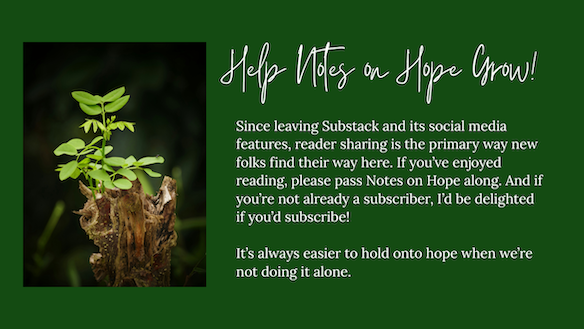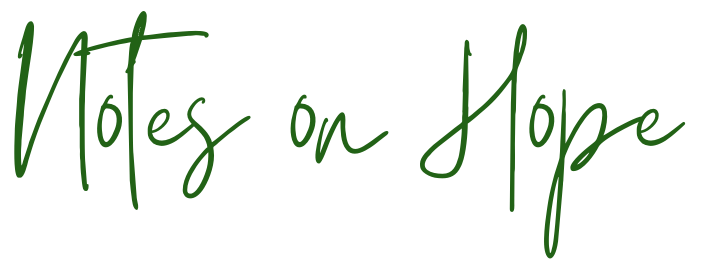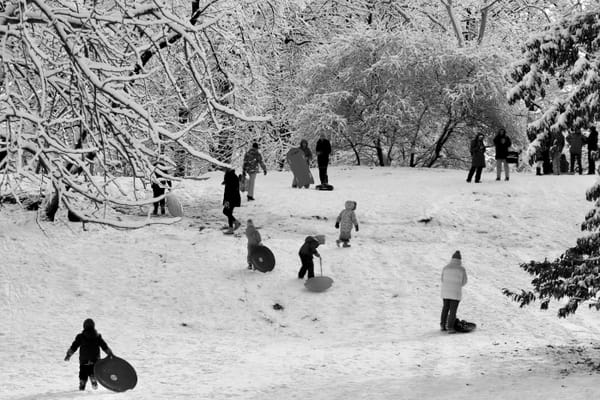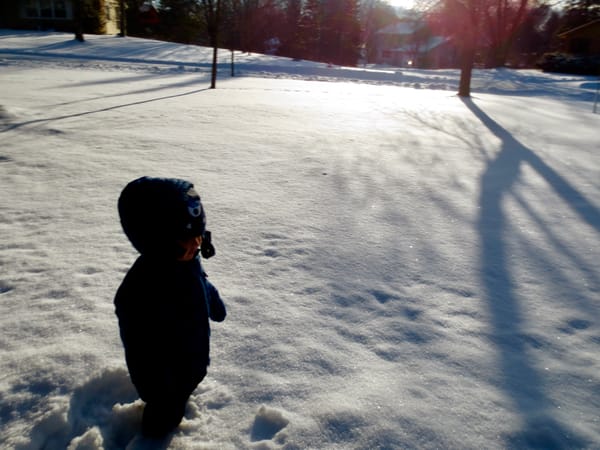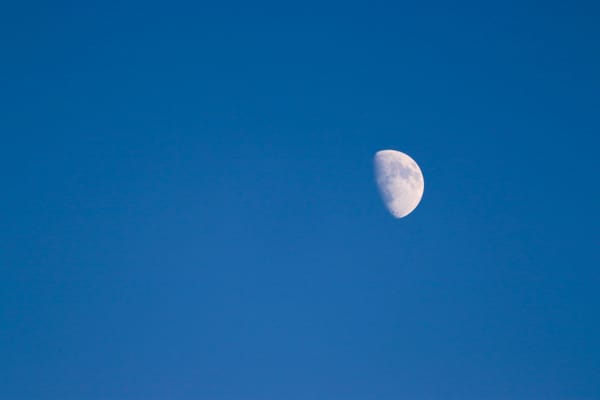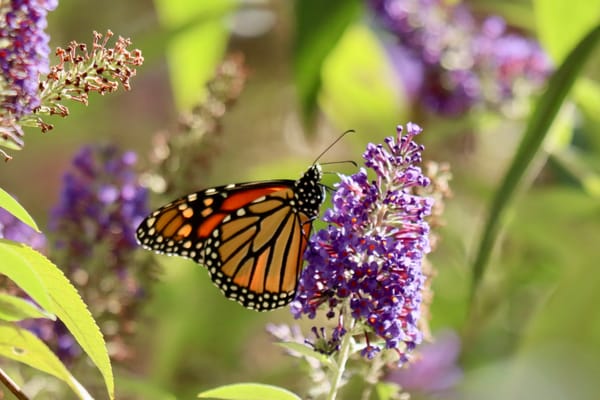On Slowing Down & Looking Closely
Curiosity and attention are the muscles that help us resist apathy
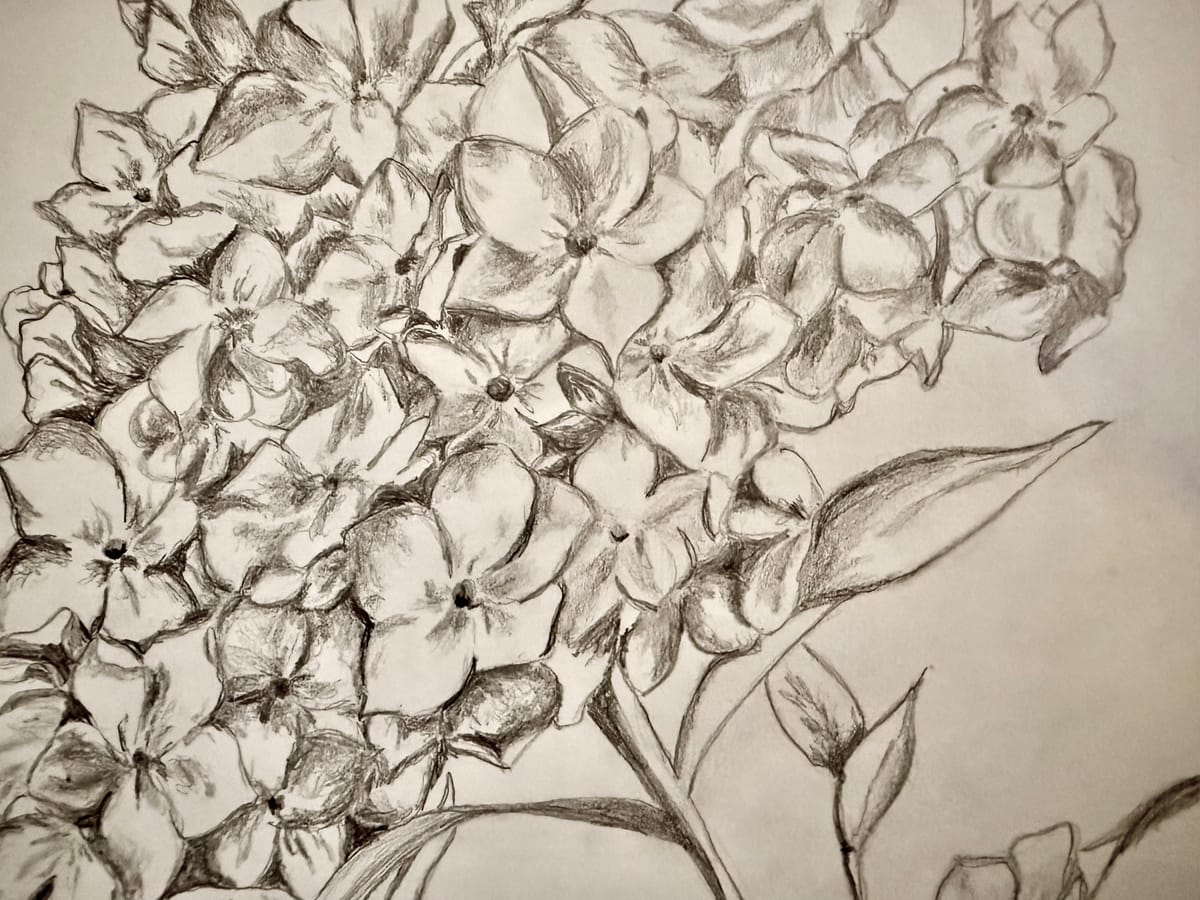
“When the heart
is cut or cracked or broken
Do not clutch it
Let the wound lie open
Let the wind
From the good old sea blow in
To bathe the wound with salt
And let it sting
Let a stray dog lick it
Let a bird lean in the hole and sing
A simple song like a tiny bell
And let it ring”
~Michael Leunig
A lot of scary things are happening all at once. Every week feels this way, but the last couple weeks have been particularly inundating. None of the stories that are filling headlines—or in some cases the stories that should be in the headlines but aren't—are distractions from any one most important story. Any event that puts lives and rights at stake is critical. So we have to continue to allow ourselves to be shocked and avoid dismissing one story in order to elevate another. The moment we accept numbness to anyone’s suffering, we give into the notion that some lives—some children, even—matter more than others. We have to take it all in and keep feeling shocked and heartbroken, no matter how far away suffering may seem or how small the group it impacts. If you’re still capable of feeling shocked, this is a good thing. It means that you still care and your compassion hasn’t been defeated yet.
It takes a specific kind of fortitude of heart to pay constant attention in this way without becoming numb, though. And the muscles that make this fortitude possible are not built by immersing ourselves in tragedy alone, but also by slowing down and practicing paying close attention to all that breathes and offers quiet beauty.
Moments of quiet attention are partly about allowing ourselves respite, which helps to prevent the paralysis and indifference that can seep in when we’re overwhelmed. But close attention isn’t simply a break. It is also a practice that ensures we remember why we care and fight for each other in the first place and that expands our capacity to do so. There are many ways to take a break and catch our breath, and this is an important habit as well, but it’s not the same as developing a practice of attention. Learning to pay slow, careful, curious attention to the life and beauty around us isn’t a way of stepping out of the world but rather of stepping more deeply and purposefully into it. The practice of slowing down and paying close attention can be a way of finding oxygen when we are breathless, but it is also a way of expanding our understanding and our empathy.
In her book, Orwell’s Roses, Rebecca Solnit shares an anecdote about the photographer, Zoe Leonard, who worried in the 1980s that her images of clouds were inappropriate artistic work in the context of the suffering of the AIDS crisis. As Leonard recalls, though, the artist and activist, David Wojnarowicz, reassured her, countering her fear. She remembers him saying,
"Zoe, these are so beautiful, and that's what we're fighting for. We're being angry and complaining because we have to, but where we want to go is back to beauty. If you let go of that, we don't have anywhere to go."
Reflecting on this advice, Leonard says,
"You know, we were all just too busy for beauty. We were too angry for beauty. We were too heartbroken for beauty. I felt like an asshole with these pictures of clouds, but David was right. You go through all of the fighting not because you want to fight, but because you want to get somewhere as a people. You want to help create a world where you can sit around and think about clouds. That should be our right as human beings."
Pausing to pay attention, to see beauty, and to absorb the living world around us isn’t only a source of relief from pain and stress. It is also a palpable reminder of our common humanity and of a relationship to the world that we should all be entitled to experience—one that is interrupted and strangled for so many. Taking the time to notice all that is alive and beautiful around us offers, not only an opportunity for individual recuperation, but also a reminder of why it is important to continue striving for others, so that we can all have access to respite and awe.
And even beyond this, close attention also provides a unique route to deepened understanding, and this is a gateway to sustaining empathy. As we learn to look closely at anything, even clouds, we hone the skills involved in looking closely at each other. As Simone Weil said, “Attention is the rarest and purest form of generosity. It is given to very few minds to notice that things and beings exist.”

For as long as I can remember, drawing has been the primary way I’ve practiced this particular kind of close attention. There are lots of other ways to practice deep attention, but I find that describing the process of drawing provides a useful entry point for understanding what can be gained by stretching our ability to pay very close attention. For me, drawing was always a way to get to know the world better. There’s an intimacy to studying something or someone closely enough to replicate the finest details—to understand how light glints and where shadows fall, where there is symmetry and asymmetry, exactly how gentle a curve is, or how one line connects to the next. Art isn’t just found in learning to control a pencil, but also in learning to notice and, through noticing, to become more open to understanding and to shifting our understanding, as we see details we hadn’t seen before.
The cognitive scientist, Alexandra Horowitz, notes,
“Part of what restricts us seeing things is that we have an expectation about what we will see, and we are actually perceptually restricted by that expectation.”
Drawing is a way of freeing ourselves from this perceptual constraint and getting to know the world more deeply as it really is. In my experience, usually, when I notice that something doesn’t quite look right in a drawing, close observation of the subject will reveal that, somewhere along the way, I drew what I expected rather than what was actually in front of me. This is why most artists will advise you to look at your subject more than at the paper, which can feel counterintuitive. But it is the looking that is most crucial, not the pencil to paper. Children’s book illustrator, Elisha Cooper, says that he is often drawn to the sketches over the masterpieces in museums, because they “have more life,” and that his own sketching makes his “memory of a place stronger.” That sense of life and the way drawing embeds a subject in memory comes, I think, from the careful attention to the subject that occurs when we are really looking closely. There is a kind of empathy that occurs through observation, as we make what we see a part of us.
Rainer Maria Rilke’s teacher, Theodore Lipps, called this form of attention “inseeing,” which, Rilke explained, is not the same as inspecting. Inseeing is an effort to deeply understand something in an intrinsic way, not as a lens on your own experience, but rather to truly get to the essence of something for its own sake. It is a practice that is directly connected to the philosophical origin of the notion of empathy.
Teachers practice inseeing when they observe children closely with the intent to truly understand a child’s experience, rather than simply looking at a child from a perspective colored by expectation and assumption. And children do this constantly themselves. In fact, Horowitz compares the eye of the artist to the eye of the child. She says,
“One perceptual constraint that I knowingly labor under is the constraint that we all create for ourselves: we summarize and generalize, stop looking at particulars and start taking in scenes at a glance—all in an effort to not be overwhelmed visually when we just need to make it through the day. The artist seems to retain something of the child’s visual strategy: how to look at the world before knowing (or without thinking about) the name or function of everything that catches the eye.”
When I was teaching, I loved taking preschool children on photography walks, because the images they captured would invariably showcase their drive to get to know all the details of the world. Rather than trying to perfectly frame an image, they would capture interest. Like Zoe Leonard, they would aim their cameras at the sky and photograph the clouds. Or they would crouch so close to a flower, directing the lens nearly inside its bloom, so that the result would be a Georgia O’Keefe style wash of petals and vivid color. They weren’t really looking for images at all. They were exploring the world and using the camera as a tool for seeing and understanding, rather than as a tool for memorializing.
Similarly, I remember watching a kindergartener drawing one afternoon, carefully filling her entire paper with blue, from her broad, green grass strokes to the edge of the page. Only the previous day she had drawn the sky as a bold blue line across the top of the page, as young children often do. So I asked her what had made her change the way she drew the sky, and she said, “I was just looking at the sky, and I suddenly noticed that it doesn’t stop. It goes all the way down!” It would be easy to simply view the change in her drawing as evidence of the emergence of a new representational skill. But it was so much more than that. Her drawing was both a motivator for and a reflection of her deepening understanding of the world. She understood the sky differently than she had the day before.

This, I think, is the most important point in our frenzied and wrenching times. As we are inundated by headlines that threaten to sap us of our capacity to care, pausing to pay close attention, and working at developing and refining the skills involved in looking or listening more closely, strengthens our ability to understand and feel connected to the world. And this fuels our care. The practice of inseeing doesn't offer us a break from reality. Instead, it helps us to feel more interconnected, and as we hone these skills we become more able to integrate them into our daily lives so that we see other people as more than stories in our timelines or numbers in data sets. We can develop the ability to practice inseeing with each other. Even when we are far removed from someone else’s life experience, we are reminded, by developing the skill of close attention, that there is always more to be understood. Learning to look closely, as a child or an artist does, stretches our humility and in doing so motivates our care. The poet, Mary Oliver, reminds us,
“Let me keep my distance, always, from those
who think they have the answers.
Let me keep company always with those who say
'Look!' and laugh in astonishment,
and bow their heads.”
Drawing has always been an entry point to inseeing for me. But I’ve also experienced this close attention walking through the woods listening for birds. I think music can offer a similar gateway to detailed observation, as can writing. And, though I tend to lean towards art as a vehicle for attention, I suspect there is something similar that happens for a scientist, as they observe the movement of cells through a microscope or trace the patterns of the stars. It is less the medium than the practice of looking that matters, and the way in which we carry this practice into the work of metabolizing unfolding events and connecting to the lives that are impacted.
So, I’m curious. What do you do to access deep attention—to focus your curiosity and build the skills and habits of careful, humble, empathetic understanding? And if you’re not sure, where might you start? What practice might you begin that would slow your mind down enough to become entranced by details and to see the sky with new clarity?
Wishing you slow moments of care and connection,
Alicia
A few things I found helpful and hopeful this week…
- USC students are helping immigrants move their hearings online
- Erin Reed’s response to NYTimes Sarah McBride interview
- A trans couple helped to shelter unhoused youth for over a decade (Also, if you're not following Teen Vogue, you should start.)
- Abraham Lincoln wasn’t born an abolitionist, he became one
